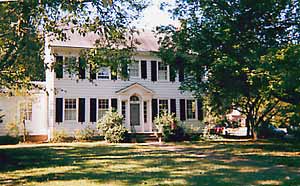All About Colonial
Williamsburg
What is there to do in Colonial
Williamsburg? What is there not to do?
Williamsburg once was the center of culture, government and
education in Virginia in the 1700s. Colonial Williamsburg is
Williamsburg's historic district. Its 300 acres are nestled next to
the
College of William and Mary with many Colonial structures
reconstructed on their original sites or restored during the 1930s.
What's truly nifty about Colonial Williamsburg is the fact that
interpreters dressed in colonial garb walk, work and even live within
the historic district. They're there to help visitors understand what
day-to-day life was like for colonialists.
You can walk through Colonial Williamsburg anytime without charge.
Because many re-enactors live in Colonial Williamsburg, you'll
find someone on your walk dressed as a colonial smithy, all the better
-- be sure to engage him in conversation. You'll no doubt hear a
distinct colonial "accent," to his speech -- re-enactors learn how to
speak words the way colonists did.
Fees are charged if you want to enter any of the historic buildings and
see arts and crafts demonstrations or attend scheduled performances such
as Colonial Williamsburg's Revolutionary City programs, which
have re-enactors performing stories of everyday life told by the
residents of Williamsburg in the 1700s.
For example, the enactment of "Building a Nation," explores residents'
lives and how they and prominent visitors to Williamsburg (think
Washington, Jefferson, Franklin, etc.) helped shape an emerging nation.
Colonial Williamsburg also has many events throughout the year,
including a reading of the Declaration of Independence and spectacular
fireworks displays during the Fourth of July holiday season.
Many people, in fact, make a trip to Colonial Williamsburg for the
holidays a family tradition; why don't you make it one, as well?
Those who like to see their history in museums won't be disappointed:
Colonial Williamsburg has several art, antique and artifact museums to
visit.
The DeWitt Wallace Decorative Arts Museum, for example, is home to a
collection of British and American antiques from the 17th-19 centuries,
including metals, ceramics, glass, furniture, paintings, prints,
textiles and firearms.
The work of colonial as well as contemporary artists and crafts persons
who work or worked outside of mainstream art are housed in the Abby
Aldrich Rockefeller Folk Art Museum. The paintings, carvings, toys and
needlework pieces housed here will jump at you for their bold colors,
simple shapes and creative patterns.
We at the Alice Person House
have lived in Williamsburg a long time and so we know Colonial
Williamsburg well and we're happy to give you our special
recommendations on what to see and do on your visit.
 |
|





